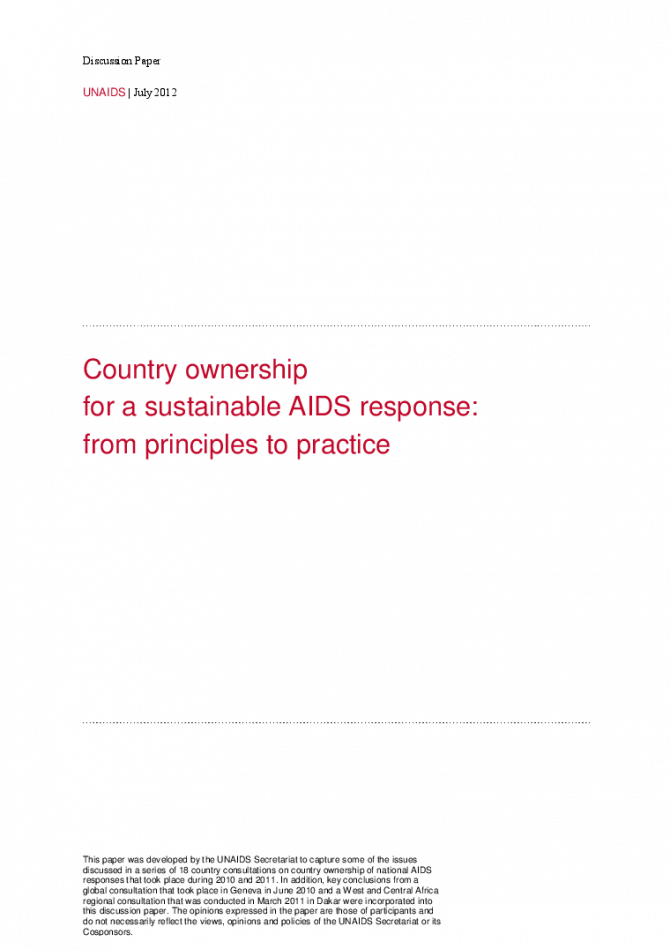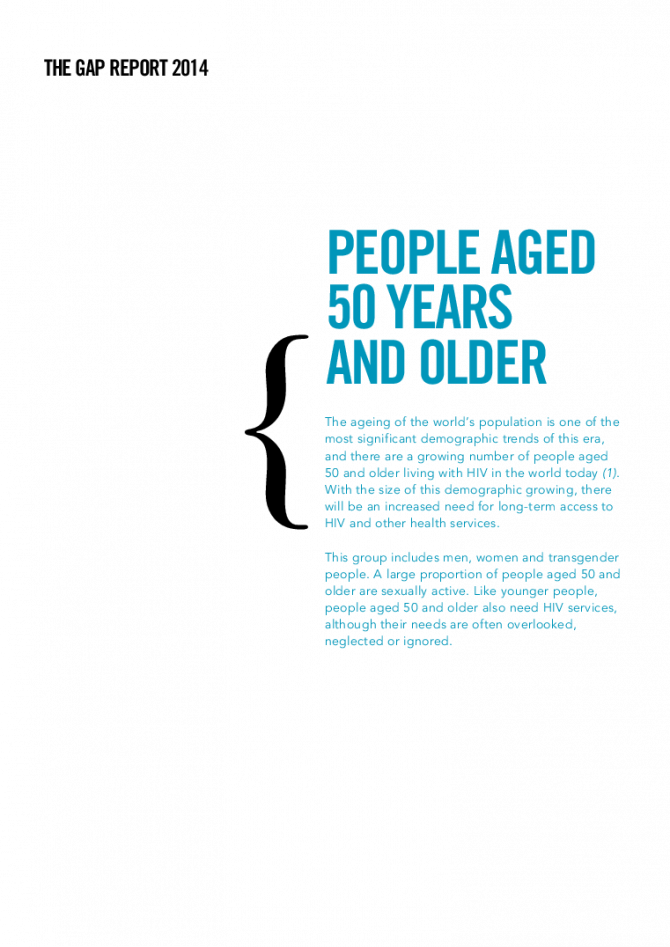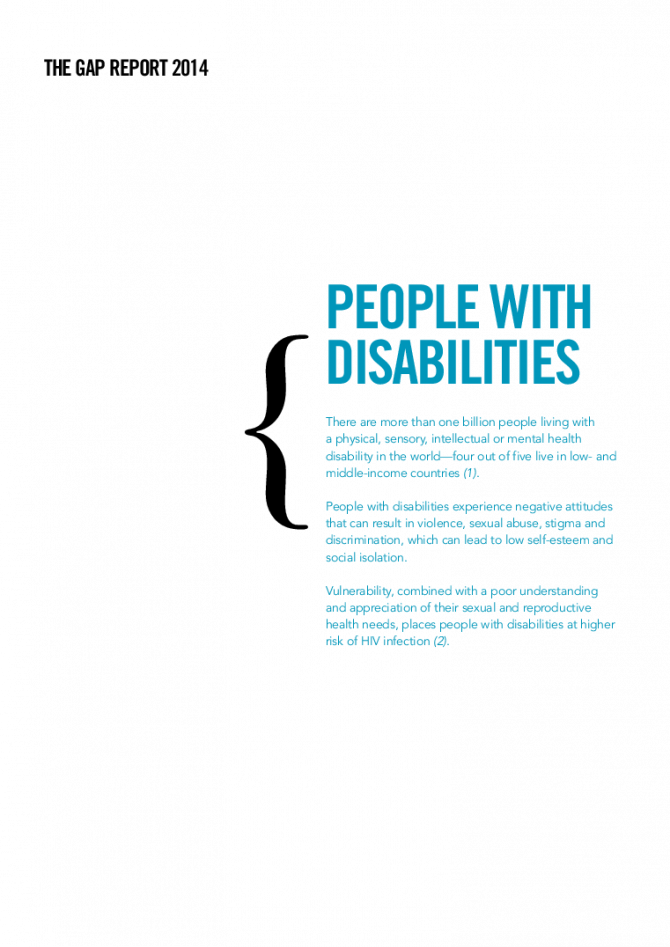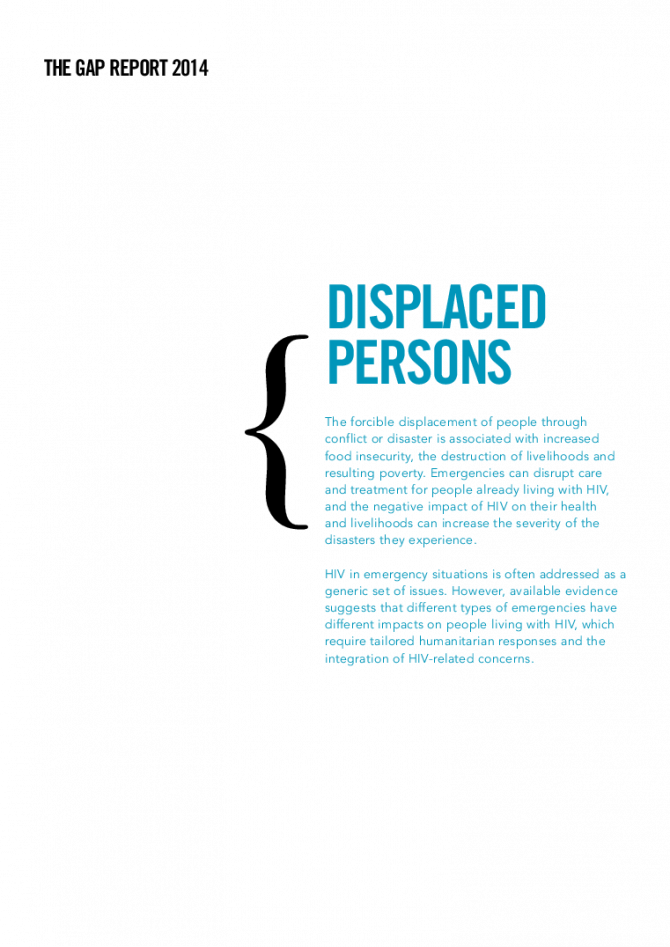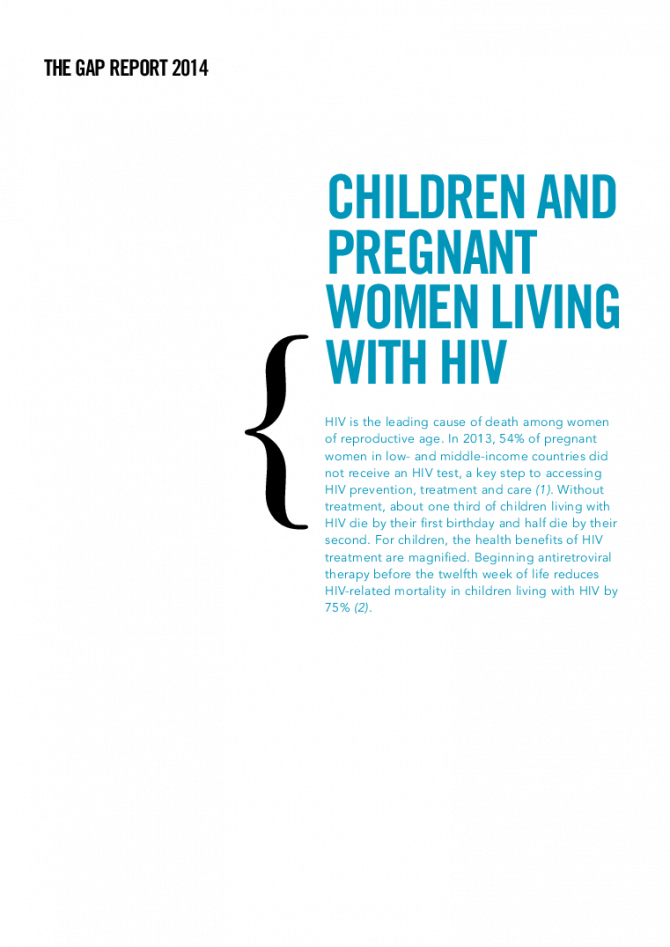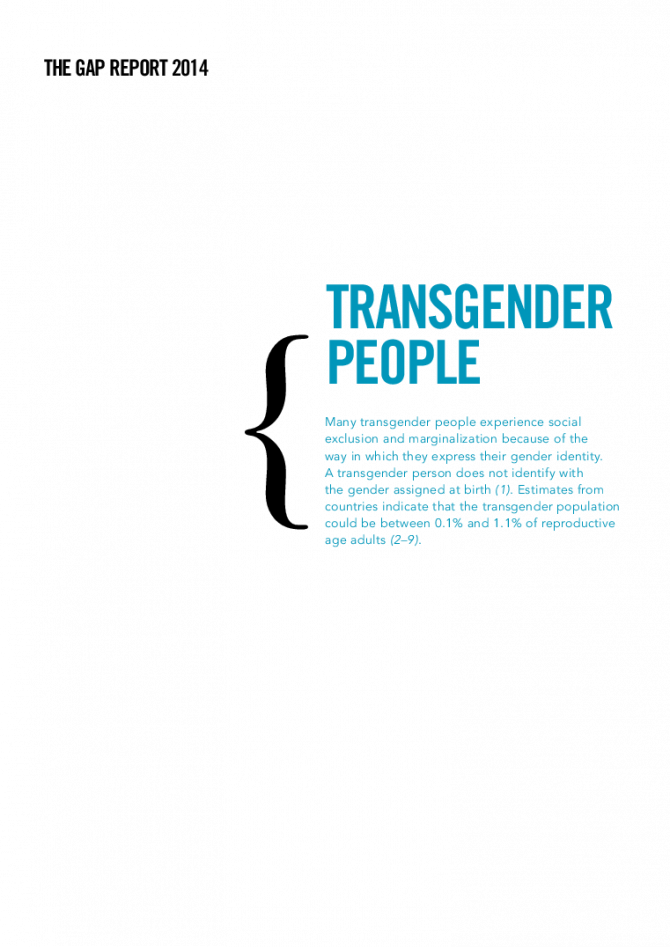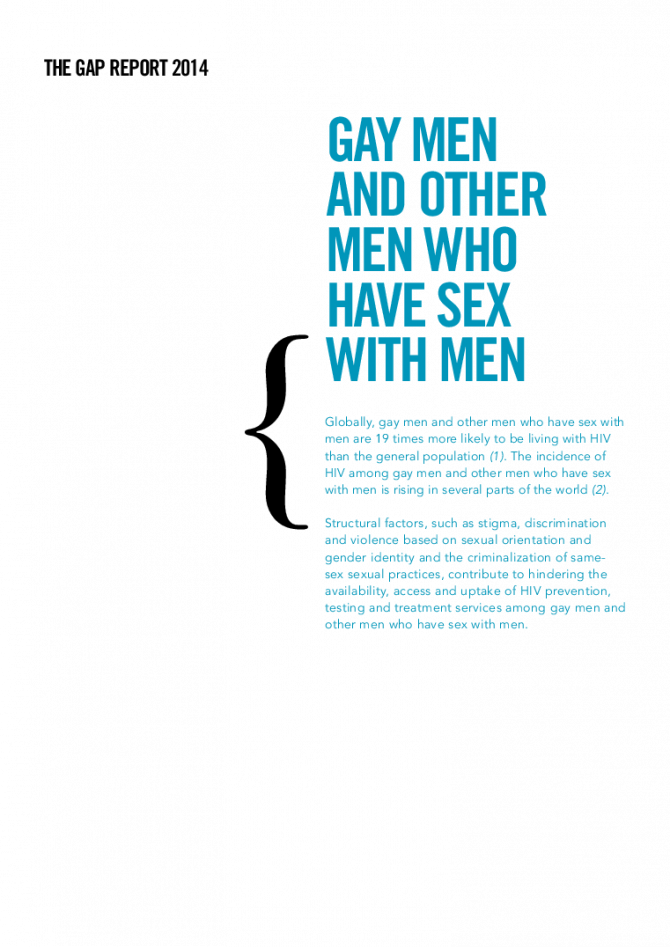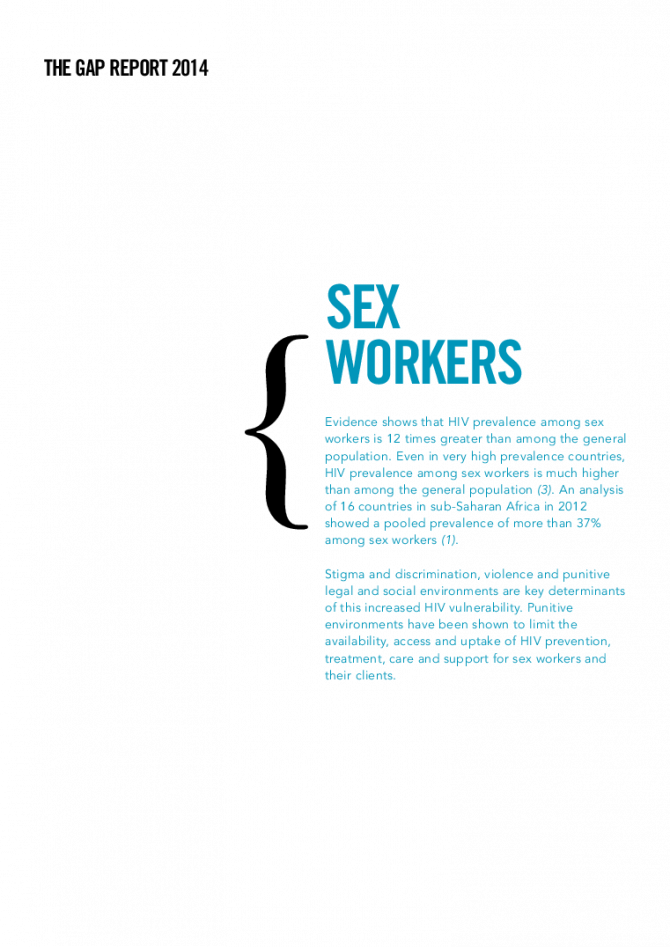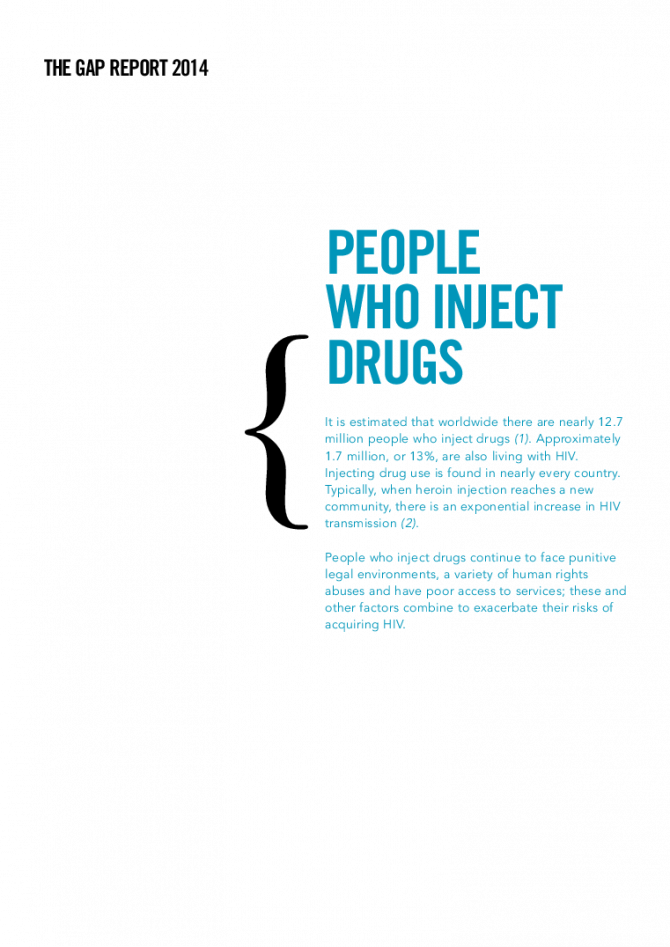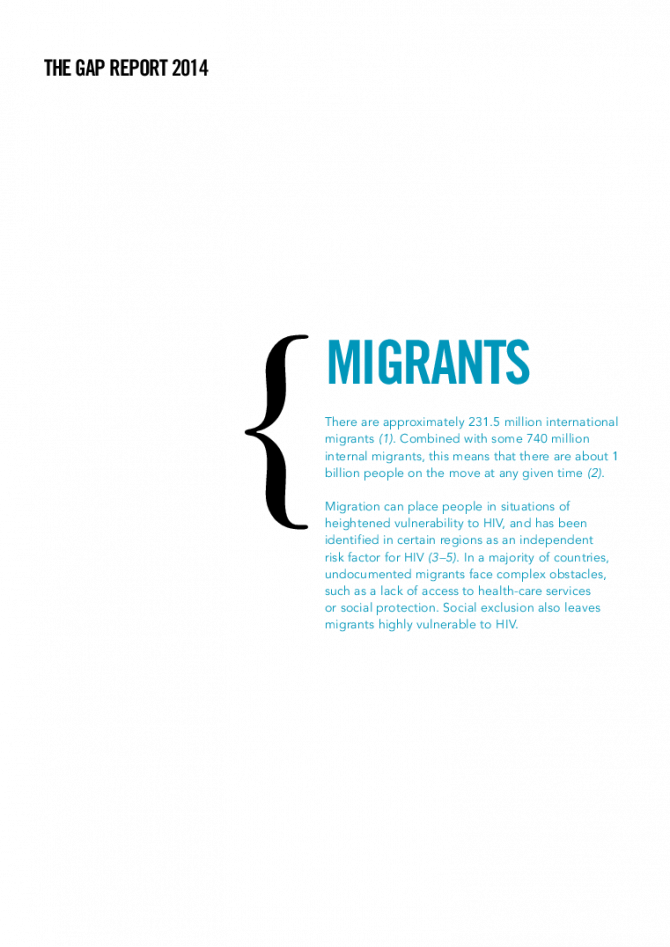Documents
Country ownership for a sustainable AIDS response: from principles to practice
02 July 2012
Committed political leadership, early and sustained activism by civil society, social mobilization of communities, innovation and the rapid injection of new funding and other resources have transformed the AIDS response into a major global health success. Increasingly, the importance of strong country ownership is being recognized as a vital factor for sustaining these gains.
Documents
People aged 50 years and older
16 October 2014
The ageing of the world’s population is one of the most significant demographic trends of this era, and there are a growing number of people aged 50 and older living with HIV in the world today. With the size of this demographic growing, there will be an increased need for long-term access to HIV and other health services. This group includes men, women and transgender people. A large proportion of people aged 50 and older are sexually active. Like younger people, people aged 50 and older also need HIV services, although their needs are often overlooked, neglected or ignored.
Documents
People with disabilities
16 October 2014
There are more than one billion people living with a physical, sensory, intellectual or mental health disability in the world—four out of five live in low- and middle-income countries. People with disabilities experience negative attitudes that can result in violence, sexual abuse, stigma and discrimination, which can lead to low self-esteem and social isolation. Vulnerability, combined with a poor understanding and appreciation of their sexual and reproductive health needs, places people with disabilities at higher risk of HIV infection.
Documents
Displaced persons
16 October 2014
The forcible displacement of people through conflict or disaster is associated with increased food insecurity, the destruction of livelihoods and resulting poverty. Emergencies can disrupt care and treatment for people already living with HIV, and the negative impact of HIV on their health and livelihoods can increase the severity of the disasters they experience. HIV in emergency situations is often addressed as a generic set of issues. However, available evidence suggests that different types of emergencies have different impacts on people living with HIV, which require tailored humanitarian responses and the integration of HIV-related concerns.
Documents
Children and pregnant women living with HIV
16 October 2014
HIV is the leading cause of death among women of reproductive age. In 2013, 54% of pregnant women in low- and middle-income countries did not receive an HIV test, a key step to accessing HIV prevention, treatment and care. Without treatment, about one third of children living with HIV die by their first birthday and half die by their second. For children, the health benefits of HIV treatment are magnified. Beginning antiretroviral therapy before the twelfth week of life reduces HIV-related mortality in children living with HIV by 75%.
Documents
Transgender people
16 October 2014
Many transgender people experience social exclusion and marginalization because of the way in which they express their gender identity. A transgender person does not identify with the gender assigned at birth. Estimates from countries indicate that the transgender population could be between 0.1% and 1.1% of reproductive age adults.
Documents
Gay men and other men who have sex with men
16 October 2014
Globally, gay men and other men who have sex with men are 19 times more likely to be living with HIV than the general population. The incidence of HIV among gay men and other men who have sex with men is rising in several parts of the world. Structural factors, such as stigma, discrimination and violence based on sexual orientation and gender identity and the criminalization of same-sex sexual practices, contribute to hindering the availability, access and uptake of HIV prevention, testing and treatment services among gay men and other men who have sex with men.
Documents
Sex workers
16 October 2014
Evidence shows that HIV prevalence among sex workers is 12 times greater than among the general population. Even in very high prevalence countries, HIV prevalence among sex workers is much higher than among the general population. An analysis of 16 countries in sub-Saharan Africa in 2012 showed a pooled prevalence of more than 37% among sex workers. Stigma and discrimination, violence and punitive legal and social environments are key determinants of this increased HIV vulnerability. Punitive environments have been shown to limit the availability, access and uptake of HIV prevention, treatment, care and support for sex workers and their clients.
Documents
People who inject drugs
16 October 2014
It is estimated that worldwide there are nearly 12.7 million people who inject drugs. Approximately 1.7 million, or 13%, are also living with HIV. Injecting drug use is found in nearly every country. Typically, when heroin injection reaches a new community, there is an exponential increase in HIV transmission. People who inject drugs continue to face punitive legal environments, a variety of human rights abuses and have poor access to services; these and other factors combine to exacerbate their risks of acquiring HIV.
Documents
Migrants
16 October 2014
There are approximately 231.5 million international migrants. Combined with some 740 million internal migrants, this means that there are about 1 billion people on the move at any given time. Migration can place people in situations of heightened vulnerability to HIV, and has been identified in certain regions as an independent risk factor for HIV (3–5). In a majority of countries, undocumented migrants face complex obstacles, such as a lack of access to health-care services or social protection. Social exclusion also leaves migrants highly vulnerable to HIV.

